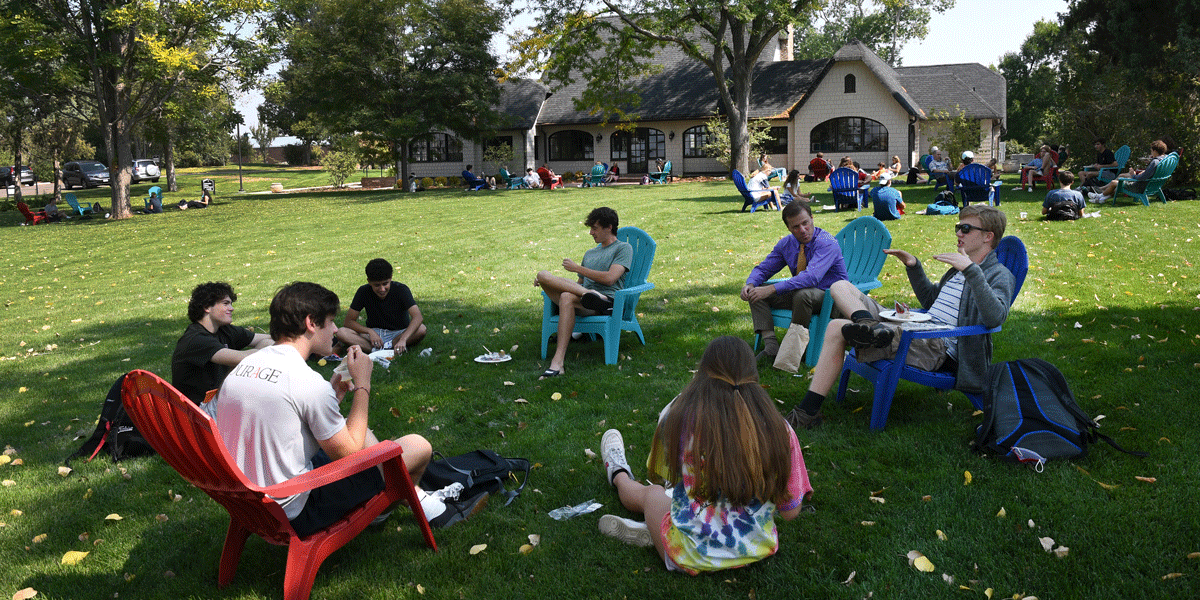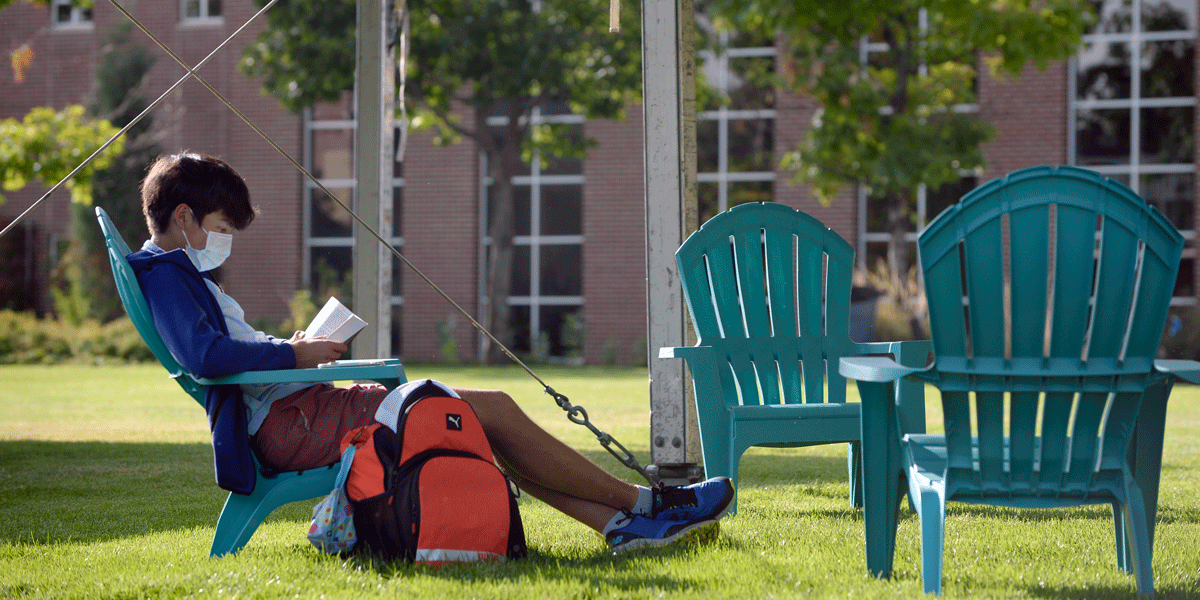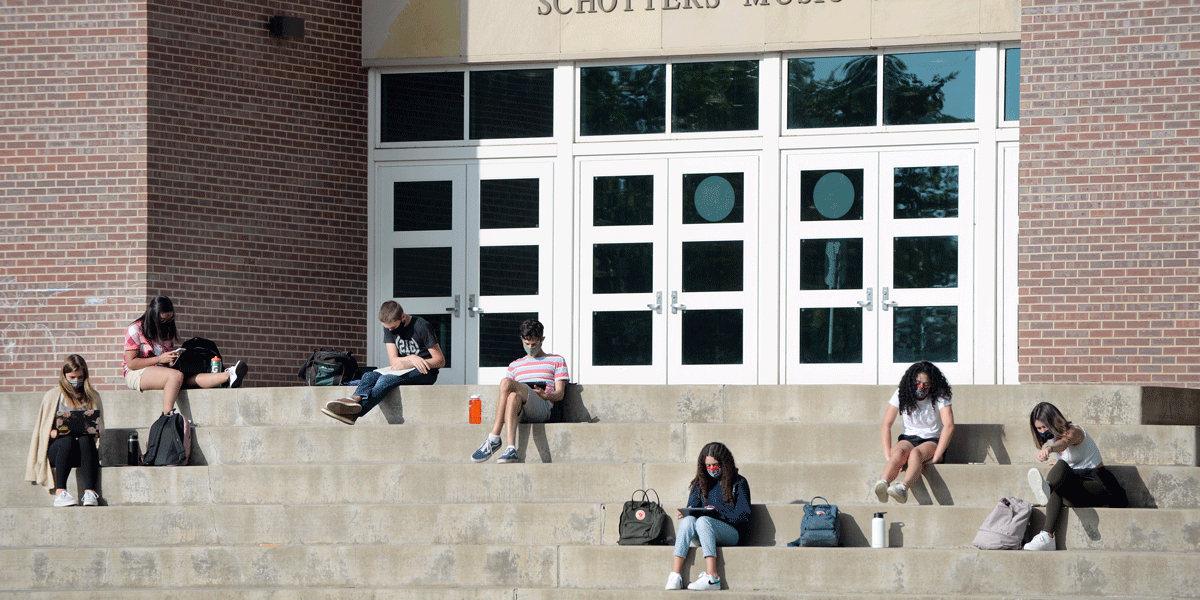In my last article for On CAmpus, I mentioned that adversity brings out some unexpected opportunities. I noted that even in the midst of COVID-19, a number of positive developments in education have occurred, including the potential phasing out of standardized testing. As I walked around the Colorado Academy campus recently, I appreciated another favorable trend: we are doing a lot more outside.
Upper Schoolers are encouraged to go outside between every class. We have extended the time between classes from our usual five minutes to ten for this purpose, and students have made good use of these breaks. (This extra time also allows teachers to clean classroom spaces in between student use—a necessary but less interesting development.) Outside, everyone must maintain social distancing and keep their masks on, but students love the opportunity to socialize in the good weather. Some students also go off by themselves for a few minutes to take a mask break, which we encourage.
Meanwhile, other teachers have taken their students outside regularly for class. Our increased Wi-Fi capacity allows Zoom connections to be made outside of the main buildings. Rather than being distracted, students have appreciated the extra space and fresh air.

Loving lunch
By far the most successful use of the great outdoors has been at lunch time. Advisors meet with their students, whether Rockies or Mustangs, and sit with them to enjoy the lunch provided by our food service crew. It’s a great way to touch base with these advisees regularly and for students to interact with each other. To facilitate this better, we have set up dozens of colorful plastic Adirondack chairs all over the campus. For our lunch, Seniors use the Welborn lawn, Juniors have the Sculpture Garden area, and Sophomores and Freshmen use the “Quad” area (officially known as Stamper Commons) between the Schotters Music Building and Chowdry Middle School.
Rather than crowd the library spaces, we have also opted to move our study spaces outside this fall. Students are using three medium-sized tents out in the Quad. Filled with the aforementioned Adirondacks, faculty and students have appreciated having these areas to study and converse. We also use the tent areas for club meetings and before- and after-school hang-out areas. When the weather turns consistently cooler, we can add side panels and heating to these tents, so the plan is to keep them on Stamper Commons for as long as necessary.

School al fresco
School al fresco is not really a new idea. In some areas of the country, the ability to learn outside of school buildings is something students and teachers have enjoyed for years. Experiential learning-based schools like High Mountain Institute in Leadville and CRMS in Carbondale devote a large percentage of their program to being outside. In other places like the Francis Parker School in San Diego, indoor/outdoor classrooms allow students to learn in the open air whenever the weather permits, which is quite often in Southern California.
During earlier pandemic outbreaks, educators moved their classes outdoors, and, as Sarah Pruitt notes in a recent History.com article, the “open-air school movement” gained significant momentum in over 100 American cities, especially in light of the very real threat of tuberculosis in those days. At that time many school buildings were poorly made, had inadequate ventilation, and suffered from overcrowding. Yes, they were incubators for disease. And there were no reliable antibiotics until decades later.
In a much-cited summer article from The Atlantic, author Olga Khazan poses the question “Why Can’t We Just Have Class Outside?” as the secret to bringing students back to school amidst the pandemic. This article also led me to a previously unknown group of “Forest Schools” in the U.S. that have already been using outdoor spaces for their classrooms, even before COVID-19.
Forced change bringing positive results
School outside relies on having the space as well as consistently good weather. Facilities must also be appropriate. We are extremely fortunate to operate a school on one of the most beautiful and spacious campuses around. Thanks to the tireless efforts of our operations staff, the grounds have never looked better. (I suppose it helped that there were virtually no people on campus all last spring!)
Of course, the outdoor life cannot last forever, even in sunny Colorado. We already endured an unusual September snowstorm, and more snow will surely fall in the weeks and months ahead. The reliability of these outdoor options will fade, even though our tents will be buttoned up and heaters added. So, the great outdoors is not the complete answer to the pandemic’s many disruptions. Still, as I strolled through the sunny campus and saw happy students of all ages outside, I marveled that, once again, some forced changes bring positive results.
